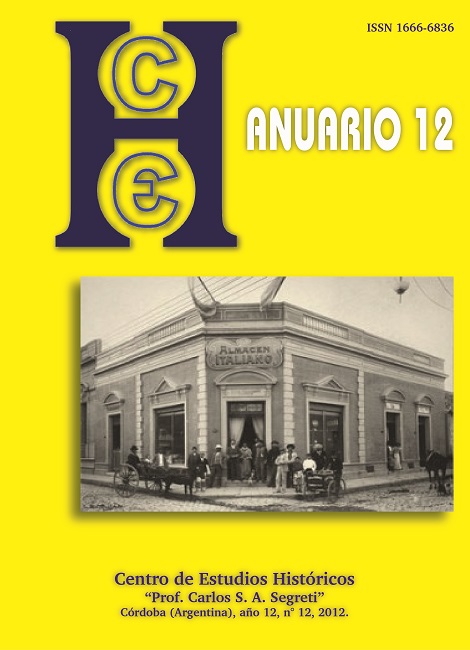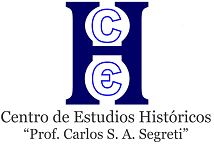Presentation: Late Antiquity Studies
DOI:
https://doi.org/10.52885/2683-9164.v0.n12.22696Abstract
The dossier rehearses some historiographical reflections on the field of research of Late Antiquity.
Downloads
References
BOWERSOCK Glenn W., BROWN Peter, GRABAR Oleg (eds.), Late Antiquity: A Guide to the Post-Classical World, Cambridge Ma., Harvard University Press, 1999.
BROWN Peter, Augustine of Hippo. A Biography. Forty-Fifth Anniversary Edition, Berkeley, University of California Press, 2013.
BROWN Peter, “The Field of Late Antiquity”, HERNÁNDEZ DE LA FUENTE David (ed.), New perspectives on late antiquity, Newcastle upon Tyne, Cambridge Scholars, 2011.
BROWN Peter, The World of Late Antiquity A.D. 150-750,Londres, Thames & Hudson, 1971.
BROWN Peter, Poverty and Leadership in the Later Roman Empire, Hanover, University Press of New England, 2002.
BROWN Peter, Power and Persuasion in Late Antiquity: Towards a Christian Empire, Madison, Wisconsin, University of Wisconsin Press, 1992.
BURY John B. (ed.), The Cambridge Ancient History, Cambridge, Cambridge University Press, 1924-1939.
CAMERON Averil, Christianity and the Rhetoric of Empire: the Development of Christian Discourse, Berkeley, University of California Press, 1991.
CAMERON Averil, WARD-PERKINS Bryan, WHITBY Michael (eds.), The Cambridge Ancient History, Vol XIV Late Antiquity: Empire and Successors, A.D. 425-600, Cambridge, Cambridge University Press, 1998.
CRIFO Giuliano, GIGLIO Stefano (eds.), Atti dell’Accademia romanistica costantiniana: XIV Convegno internazionale in memoria di Guglielmo Nocera, Nápoles, Edizioni scientifiche italiane, 2003.
ELSNER Jan, “The birth of late Antiquity: Riegl and Strzygowski in 1901”, Art history, 25, 2002.
FITZGERALD JOHNSON Scott, The Oxford Handbook of Late Antiquity, Oxford, Oxford University Press, 2012.
FOWDEN Garth, Before and after Muhammad: the first millennium refocused, Princeton, Princeton University Press, 2014.
GWYNN David M. (ed.), A.H.M. Jones and the later Roman Empire, Leiden, Brill, 2008.
HEATHER Peter, The Fall of the Roman Empire: a New History,Londres, Macmillan, 2005.
JONES Arnold H. M., The Later Roman Empire 284-602. A Social, Economic and Administrative Survey, Oxford, Blackwell, 1964.
MARKUS Robert, “Between Marrou and Brown: Transformations of Late Antique Christianity”, ROUSSEAU Philip, PAPOUTSAKIS Manolis, PAPOUTSAKIS Emmanuel (eds.), Transformations of Late Antiquity: Essays for Peter Brown, Ashgate, Farnham, 2009.
MARROU Henri-Irénée, De?cadence romaine ou antiquite tardive?: IIIe-VIe sie?cle, París, E?ditions du Seuil, 1977.
MARROU Henri-Irénée, Saint Augustin et la fin de la culture antique,París, de Boccard, 1958.
MARCONE Arnaldo, “A Long Late Antiquity? Considerations on a Controversial Periodization”, Journal of Late Antiquity, 1.1, 2008.
LIEBESCHUETZ John H. W. G., The Decline and Fall of the Roman City, Oxford, Oxford University Press, 2001.
RIEGL Alois, Die spätrömische Kunstindustrie nach den Funden in Österreich-Ungarn, Viena, K.K. Hof- und Staatsdrückeri, 1901 y 1927.
SCHIAVONE Aldo, La storia spezzata: Roma antica e Occidente moderno, Roma, Laterza, 1996.
WARD-PERKINS Bryan, The Fall of Rome and the End of Civilization, Oxford, Oxford University Press, 2005.
WICKHAM Christopher, Framing the Early Middle Ages. Europe and the Mediterranean 400-800, Oxford, Oxford University Press, 2005.
Downloads
Published
Issue
Section
License
Aquellos autores/as que tengan publicaciones con esta revista, aceptan los términos siguientes:
- Los autores/as conservarán sus derechos de autor y garantizarán a la revista el derecho de primera publicación de su obra, el cuál estará simultáneamente sujeto a una Licencia de reconocimiento de Creative Commons. Se puede compartir, copiar, distribuir, ejecutar y comunicar públicamente la obra, siempre que: a) se cite la autoría y la fuente original de su publicación (revista, editorial y URL de la obra); b) no se use para fines comerciales; c) no se altere, transforme o genere una obra derivada a partir de esta obra.
- Los autores/as podrán adoptar otros acuerdos de licencia no exclusiva de distribución de la versión de la obra publicada (p. ej.: depositarla en un archivo telemático institucional o publicarla en un volumen monográfico) siempre que se indique la publicación inicial en esta revista.
- Se permite y recomienda a los autores/as difundir su obra a través de Internet (p. ej.: en archivos telemáticos institucionales o en su página web) después del proceso de publicación, lo cual puede producir intercambios interesantes y aumentar las citas de la obra publicada. (Véase El efecto del acceso abierto).









